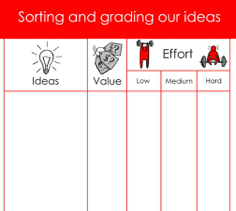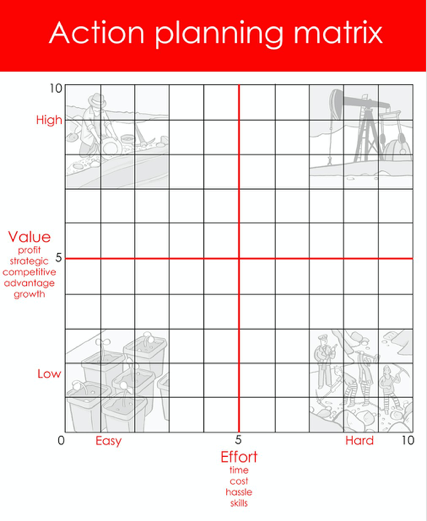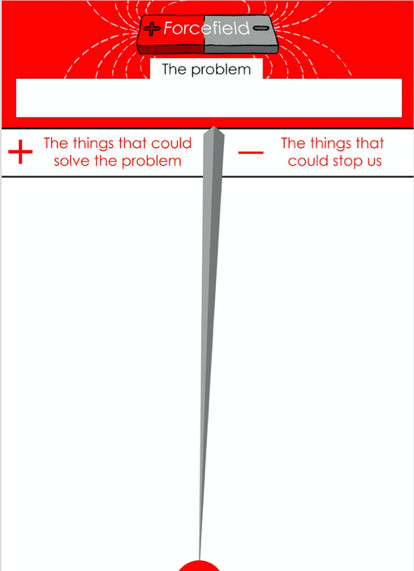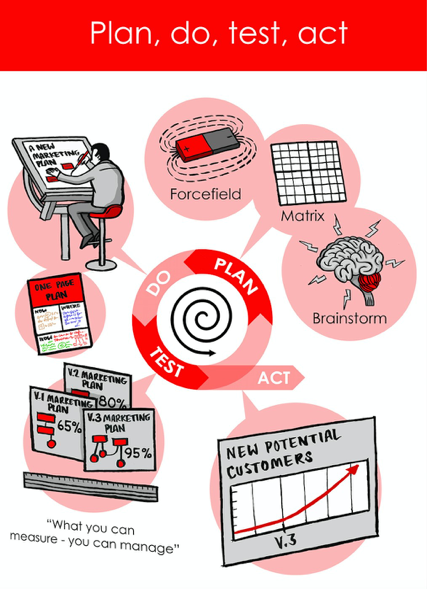Educating and Developing Your Management Team - (Part 2 of 2)
Earlier this week we discussed your management and entrepreneurial style. While your business is more than likely in the In-Between-Zone, you want to develop a “Properly Managed Zone” where the team is all pulling together in the same direction.
Now, let’s walk you through how we get there by agreeing on a standard framework. Starting with Step 1.
Step 1 – Develop your team to brainstorm properly
Developing teams need to be taught to brainstorm as a totally separate exercise.

That means – setting proper time aside to brainstorm properly. Have a flip chart or white board – and a nominated facilitator. Make sure you establish some clear rules.
The most important rule is that all ideas are captured in writing – and we don't start discussing the merits of any ideas until we have completely exhausted all ideas.
The facilitator must try and dig deep and keep asking "why questions" (they should learn the rule of "5 whys") until we have captured several possible ideas to solve the problem.
Step 2 – Develop your team to sort and grade their new ideas properly
Use the criteria we established above – VALUE and EFFORT and score each idea on a scale of 1-10 - based upon the relative values and relative effort involved.

Remember, once that you have scored the first few ideas you will have created a benchmark for comparison - and there is always scope to go back and recalibrate the scores. Try and educate your team that not every idea is a “10” idea!
Step 3 – Develop your team to plot the scores on the action plan chart
Basically position the new ideas within the 4 scoring quadrants shown in the illustration.

* Top left quadrant – HIGH VALUE / LOW EFFORT ideas. These should be your top priority actions. These ideas are where you are “panning for gold”
* Bottom left quadrant – LOW VALUE / LOW EFFORT ideas. These are great because they are easy – and they provide the team with easy wins – and help create some action momentum. These ideas are the “Out of little acorns” type.
* Top right quadrant – HIGH VALUE / HIGH EFFORT ideas. This is where you will probably end up focusing – but you need to build proper plans (see below). These ideas are where you are “drilling for oil”.
Remember - you can't try and do too many of these “drilling for oil” actions simultaneously because there will likely be too much effort involved. You need to educate your developing team to adopt a sensibly balanced approach to planning for growth.
Step 4 – Develop your team to prepare a “Forcefield Analysis”
This is how you educate your developing team to build "the bones of a plan" (using a consistent and structured and collaborative process).
To prepare a “Forcefield Analysis” you start by asking your team to identify the BIG POSITIVE actions that need to happen if the plan is going to work.

List those positive ideas on the left of the illustration above.
It would be normal to expect at least 5-6 big actions items in any plan (e.g. in a marketing growth plan you would need to do "big things" like identify what target customers look like etc.).
Once the team has exhausted all the big, positive actions - now ask them to list all the BIG NEGATIVE FORCES that are going to stop the plan happening.
Usually these are things like – “we don't have time to do this” – “we don't have some of the skills needed”- “we don’t have the resources” - and so on.
Again you would expect at least 5-6 big negative forces that are likely to hold back plan implementation.
The team should write those negative forces on the right of the illustration above.
Now – get the team to go back to the positive list on the left. Under each of the 5-6 big positives - brainstorm (say) 5 sub-actions required to drive the big action.
Similarly - go back to the negative list on the right. Under each of those 5-6 big negatives - brainstorm (say) 5 ways we could mitigate (perhaps halve the impact) of the negative force.
In this way a team (working collaboratively as a team) they can learn to quickly (within 1-2 hours) build an outline plan with about 50-60 agreed actions required (say 6 x 5 on the left side + 6 x 5 on the right side).
Those 60 actions may not comprise the whole plan - but they will cover the highlights (more than 80% of what is important) - and you will have benefitted from "team effort" and achieved a high level of team collaboration and consensus.

If you look at the illustration above – by this stage your developing team will have completed the initial PLAN (Brainstorm, Scoring Matrix, Forcefield) stage of PLAN - DO - TEST - ACT.
Their next stage is to DO. That means making somebody on the team accountable (with an agreed timescale, resources etc.) to "put flesh on the bones" of the Forcefield plan.
Usually this involves bringing the fleshed out plan back to the group (at a later date) for the next stage of team agreement.
Having reached that stage – the developing team can then move to TEST. Often this is where the initial plan is tweaked 2-3-4 + times. Let them learn to really “get it right” before they move to implement fully.
Finally ACT. Implement the plan (whatever it is).
Obviously the details of the plan are always going to vary - but what we are beginning to do is to educate and develop the team - to work together - to work in a pattern that is likely to achieve better growth results. The other benefit of a structured approach as we have illustrated – is that it becomes easy to “put the team under the microscope”. Basically where is the team strong and where is it weak? Where do we need more training and perhaps recruitment?
The team is on the way towards the "Properly-Managed-Zone" - but remember - a “journey of 1,000 miles always starts with a single step”!
You need to educate and develop your team so that they don't believe that "plate spinning" is the only game in town!
